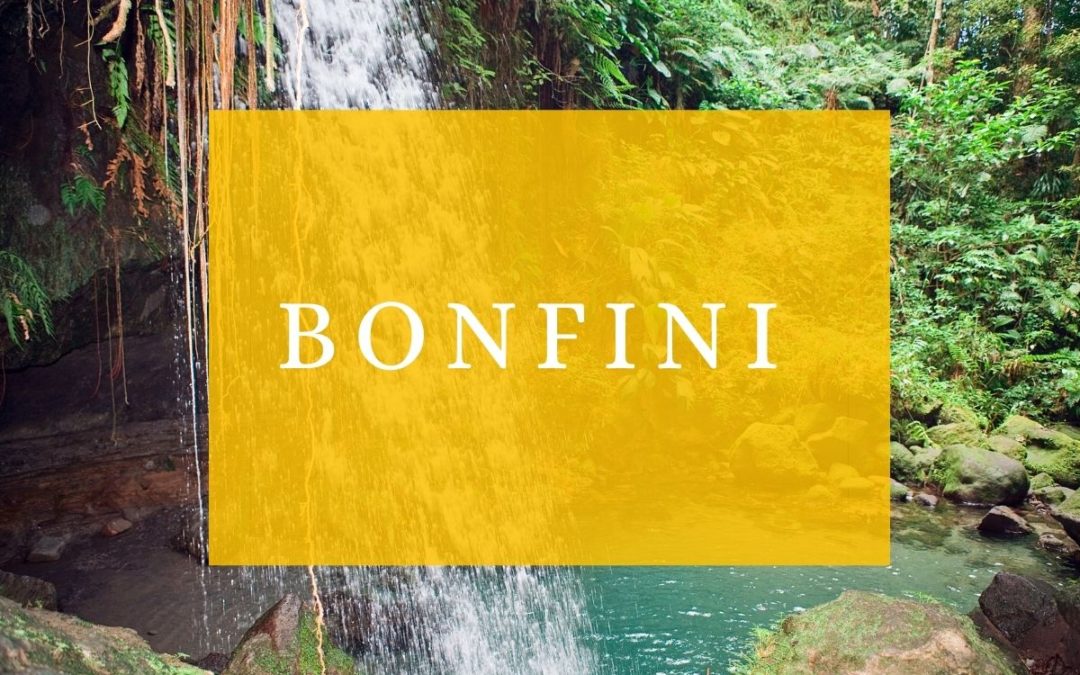I originally visited Dominica with a group of hard-core birdwatchers thirty years ago, and I still enjoy monitoring my feathered friends. Here in the rainforest, I coexist with two species of endemic parrots and an abundance of breeding and migratory birds. While trying to sort them out by sight, I’ve discovered that their names in the local Creole language are often much more evocative of their songs or mannerisms than the their less imaginative, physically descriptive English labels.
The first bird I hear in the morning is the Gray Kingbird as it celebrates the rising sun by calling its own name. “I Pipitit! Pipirit!” it announces from atop the scarlet-crowned African tulip tree. The tiny Black-faced Grassquit is called Si-si-zèb in Patois, and that’s exactly what its wheezy song sounds like as it leaps between the seed heads. From across the valley, the plaintive call of the Rufous-throated Solitaire, Siflé Moutayn (mountain whistler), drifts eerily down from the heights of the montane forest. Noisy Red-necked Parrots, Jacos, flap and chat it up in the canopy as they feed on the seeds of the mature gommyé trees behind the house. Occasionally, a pair of rare Imperial Parrots, Sisserou, join them.
The trembling Brown Thrasher is appropriately called Twamblé. Meanwhile, other thrashers and thrushes, collectively known as Gwiv, dash in and out of lush green tree ferns that punctuate the dense hedge rows. Flocks of Smooth-billed Anis, Mòs-kòbo, wag their long, black tails as they fly to their communal nest in the massive stand of bamboo above the ravine. Deep within the understory, the Red-necked Pigeon, locally known as Ramyé, calls mournfully—perhaps searching for a mate. A colony of Little Blue Herons and a pair of Yellow-crowned Night Herons fly up and down the river at dawn and dusk. In Patois they’re called Crabyé because of their diet of crabs and crayfish. A stealthy Barn Owl that’s called Chawan, hunts who knows what in the middle of the night.
Four species of hummingbirds—Purple-throated Caib, Green-throated Carib, Antillean Crested, and Blue-headed—known as Fou-fou (crazy-crazy), visit the flower gardens. Warblers and Lesser Antillean Flycatchers and Pewees, Gwo-tèt and Gòb-mouch, feed on flies and other insects. Yellow and black Bananaquits, Sikiyé (sugar suckers), and Streaked Saltators, Gwo-bèk, enjoy their share of fruits.
According to local legend, the beautiful Mangrove Cuckoo, Koukou Manyòk, calls for rain to fill cupped leaves because it’s too conceited to drink from the river. The award for most romantic goes to the dozens of Black and Lesser Antillean Swifts (Zozyo lapli), (rain birds), that appear from nowhere whenever the weather is heavy with clouds and the air is ripe with insects. They’re a marvelous sight as they swoop and chatter, obviously enjoying the feast and each other’s company.
There are also more familiar species. The little Siyòl or House Wren that builds her nest under the eaves of the veranda looks exactly like the one who made its nest in our garage back in Ohio. Lesser Antillean Bullfinches (he’s Pennwè, she’s Mwéson) are the same tame birds my mother kept in a cage when I was a child and are bold and frequent visitors to my West Indian kitchen. The Bare-eyed Robin’s melodious caroling brings back fond memories of springtime lawns and squirming earthworms after long, hard winters up north. But the most dangerous predator is known as the Malfini (bad ending). All the rats on the island must agree that the Patois name for the Broad-winged Hawk is a perfect description of their archenemy. I once watched one live up to its name as it neatly plucked a young chicken from the backyard pen.
So now you’ve completed your beginner’s class in Dominica’s Birds in English and Creole. Are there any questions? Yes, I have one: If there’s such a thing as a Malfini, mustn’t the opposite also exist? What about a Bonfini, a happy ending?
Binoculars in hand, I patiently await its arrival.














